Age related changes in NAD+ metabolism oxidative stress and Sirt1 activity in wistar rats
- PMID: 21541336
- PMCID: PMC3082551
- DOI: 10.1371/journal.pone.0019194
Age related changes in NAD+ metabolism oxidative stress and Sirt1 activity in wistar rats
Retraction in
-
Retraction: Age Related Changes in NAD+ Metabolism Oxidative Stress and Sirt1 Activity in Wistar Rats.PLoS One. 2024 Nov 13;19(11):e0313921. doi: 10.1371/journal.pone.0313921. eCollection 2024. PLoS One. 2024. PMID: 39536040 Free PMC article. No abstract available.
Expression of concern in
-
Expression of Concern: Age Related Changes in NAD+ Metabolism Oxidative Stress and Sirt1 Activity in Wistar Rats.PLoS One. 2022 Jan 31;17(1):e0263555. doi: 10.1371/journal.pone.0263555. eCollection 2022. PLoS One. 2022. PMID: 35100313 Free PMC article. No abstract available.
Abstract
The cofactor nicotinamide adenine dinucleotide (NAD+) has emerged as a key regulator of metabolism, stress resistance and longevity. Apart from its role as an important redox carrier, NAD+ also serves as the sole substrate for NAD-dependent enzymes, including poly(ADP-ribose) polymerase (PARP), an important DNA nick sensor, and NAD-dependent histone deacetylases, Sirtuins which play an important role in a wide variety of processes, including senescence, apoptosis, differentiation, and aging. We examined the effect of aging on intracellular NAD+ metabolism in the whole heart, lung, liver and kidney of female wistar rats. Our results are the first to show a significant decline in intracellular NAD+ levels and NAD:NADH ratio in all organs by middle age (i.e.12 months) compared to young (i.e. 3 month old) rats. These changes in [NAD(H)] occurred in parallel with an increase in lipid peroxidation and protein carbonyls (o- and m- tyrosine) formation and decline in total antioxidant capacity in these organs. An age dependent increase in DNA damage (phosphorylated H2AX) was also observed in these same organs. Decreased Sirt1 activity and increased acetylated p53 were observed in organ tissues in parallel with the drop in NAD+ and moderate over-expression of Sirt1 protein. Reduced mitochondrial activity of complex I-IV was also observed in aging animals, impacting both redox status and ATP production. The strong positive correlation observed between DNA damage associated NAD+ depletion and Sirt1 activity suggests that adequate NAD+ concentrations may be an important longevity assurance factor.
Conflict of interest statement
Figures
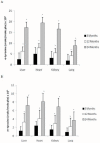
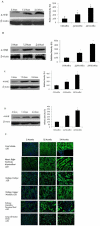

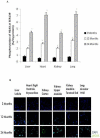
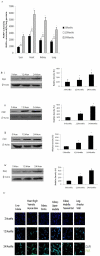


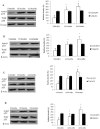
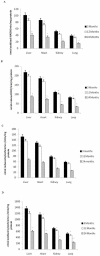

References
-
- Finkel T. Opinion: radical medicine: treating ageing to cure disease. Nat Rev Mol Cell Biol. 2005;6:971–976. - PubMed
-
- Harman D. Aging: a theory based on free radical and radiation chemistry. J Gerontol. 1956;11:298–300. - PubMed
-
- Blander G, de Oliveira R, Conboy C, Haigas M, Guarente L. Superoxide dismutase 1 knock-down induces senescence in human fibroblasts. J Biol Chem. 2003;278:38966–38969. - PubMed
-
- Nestelbacher R, Laun P, Vondrakova D, Pichova A, Schuller C, et al. The influence of oxygen toxicity on yeast mother cell-specific aging. Exp Gerontol. 2000;35:63–70. - PubMed
Publication types
MeSH terms
Substances
LinkOut - more resources
Full Text Sources
Other Literature Sources
Medical
Research Materials
Miscellaneous

